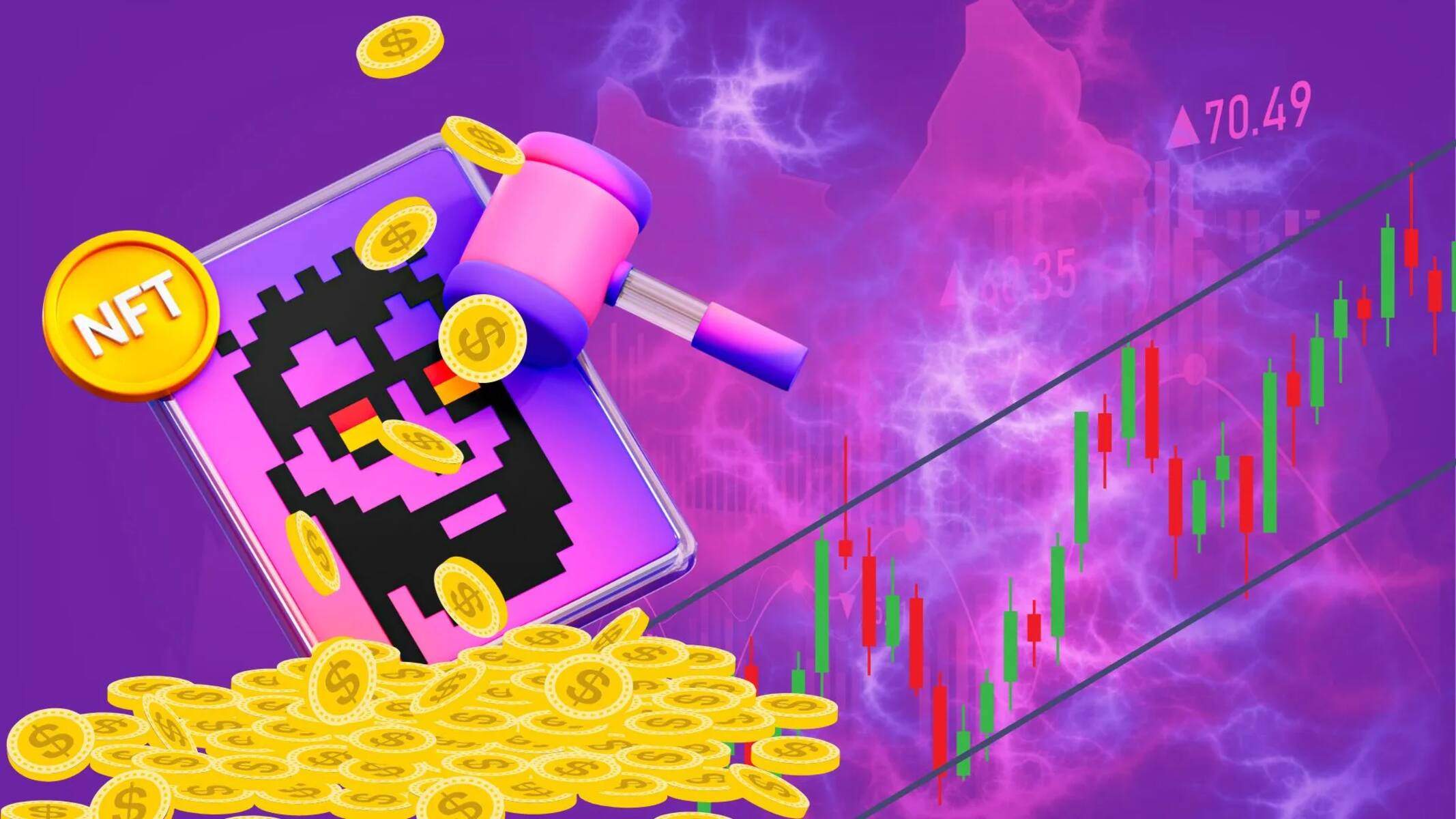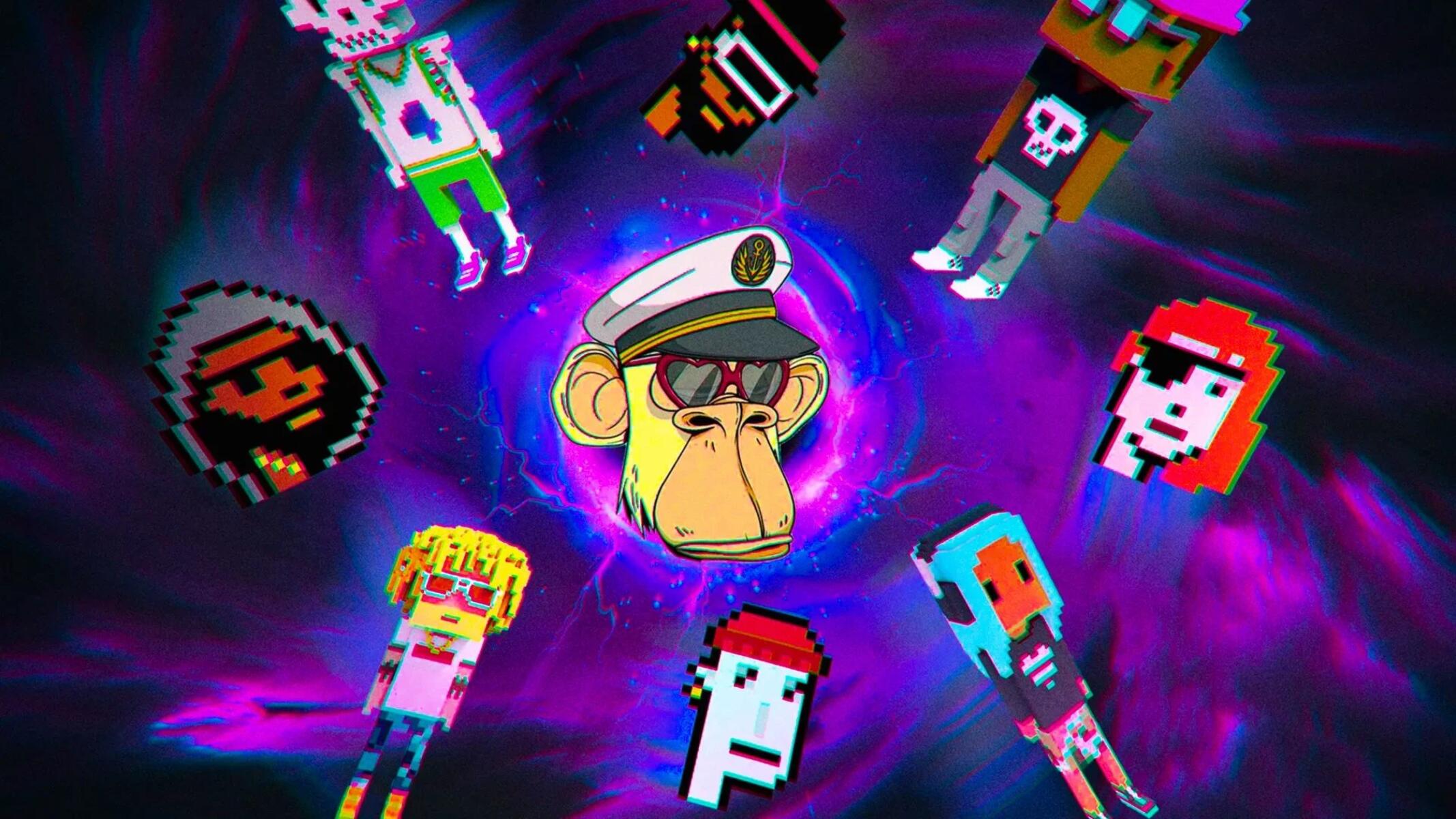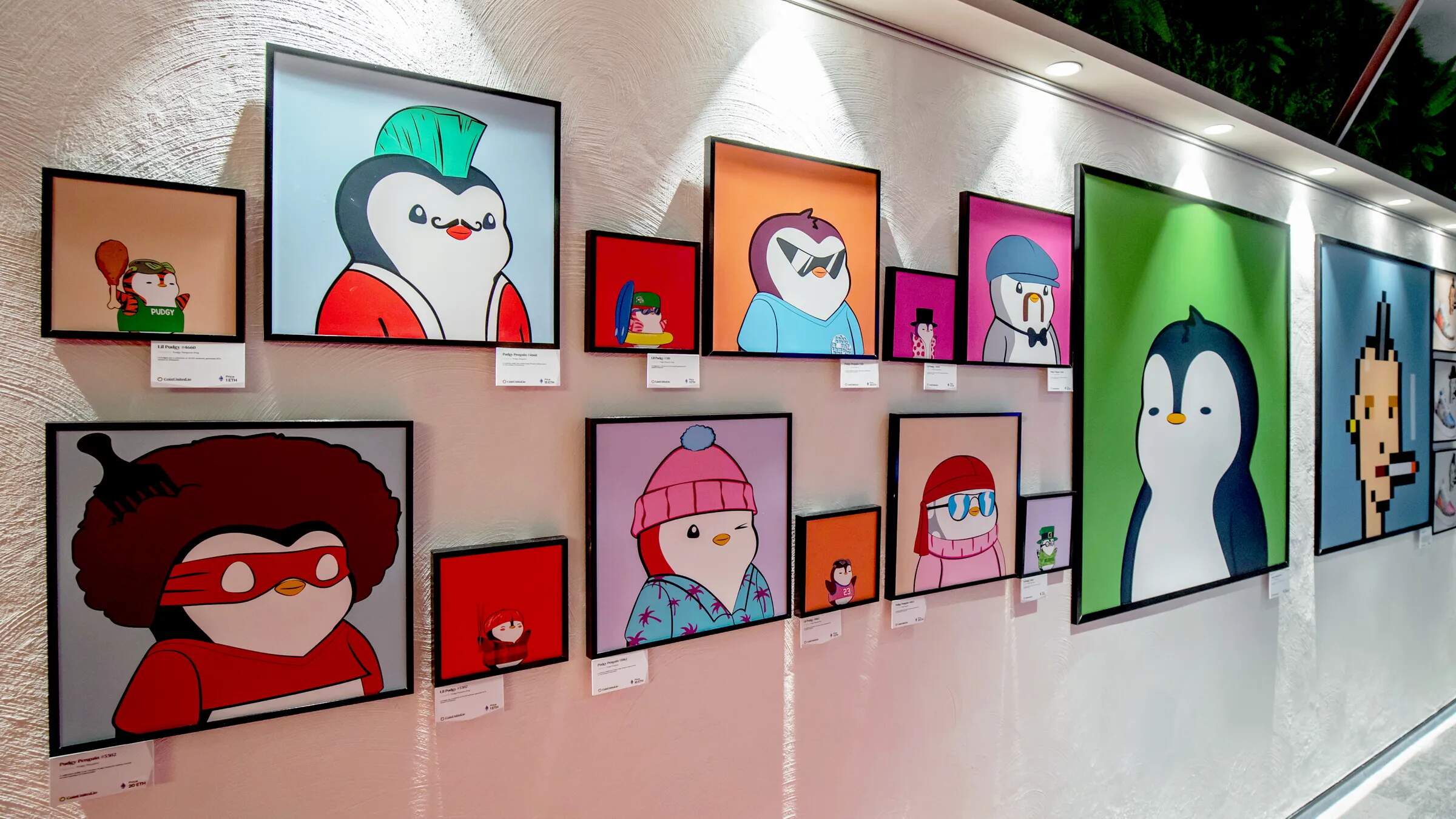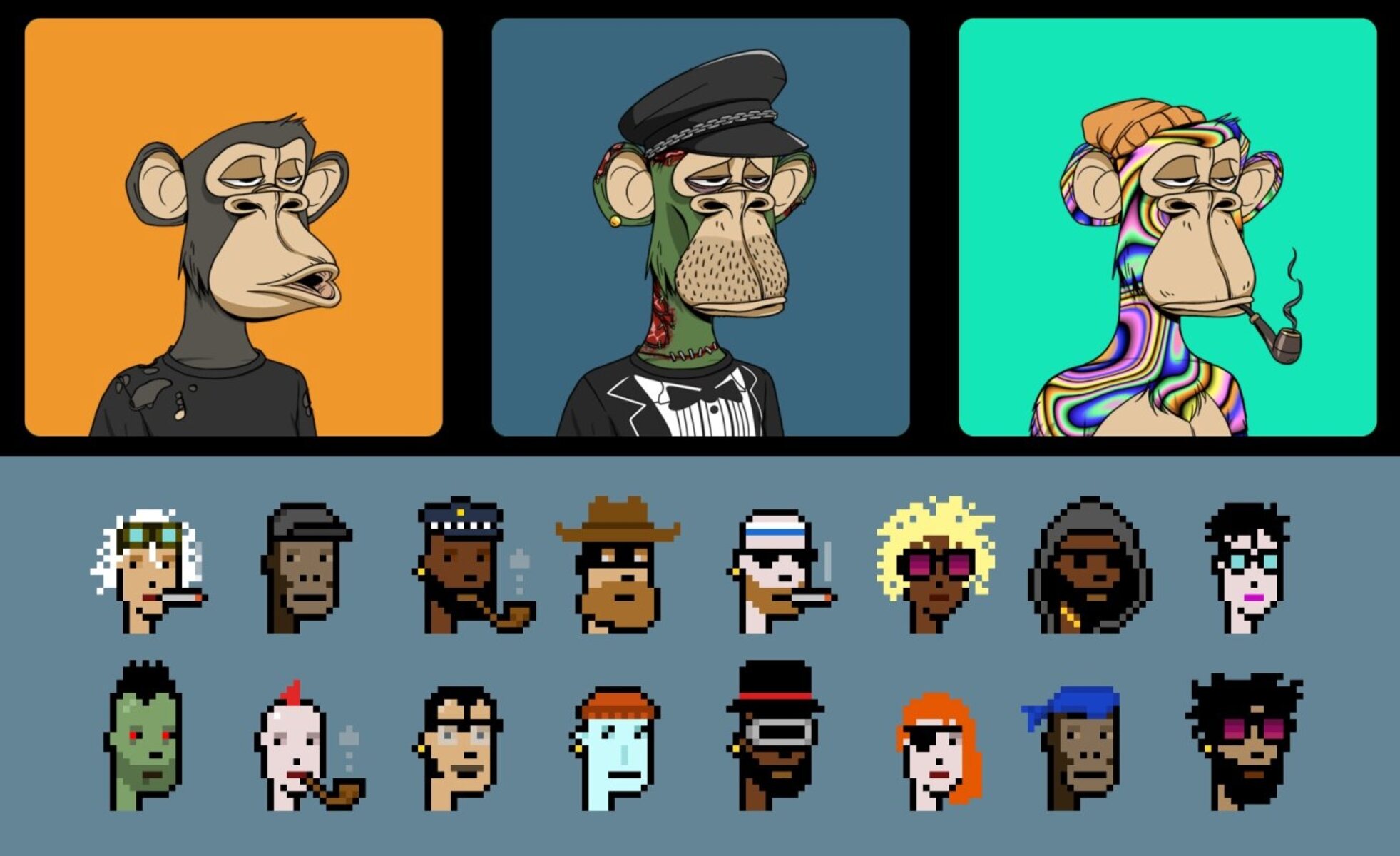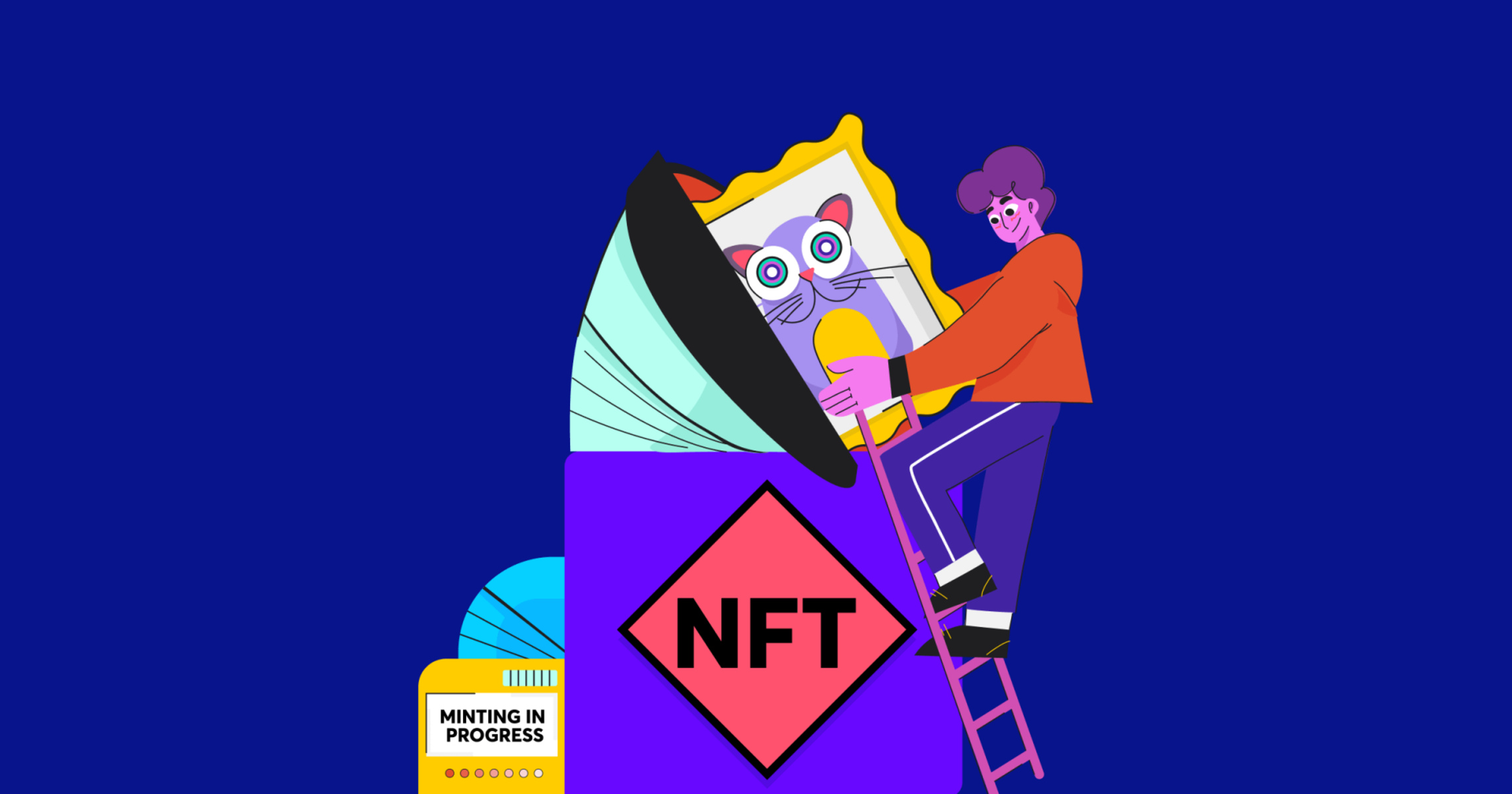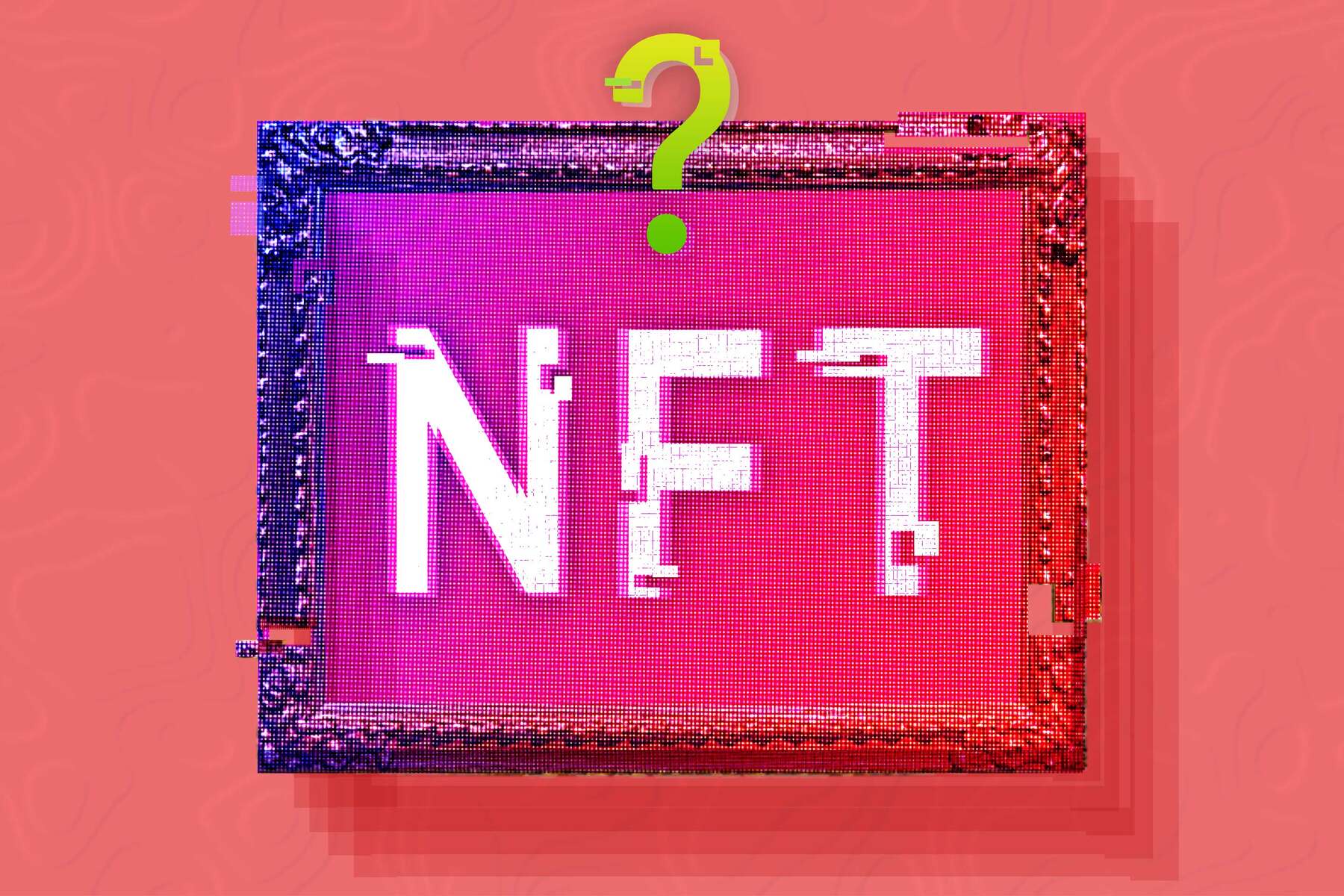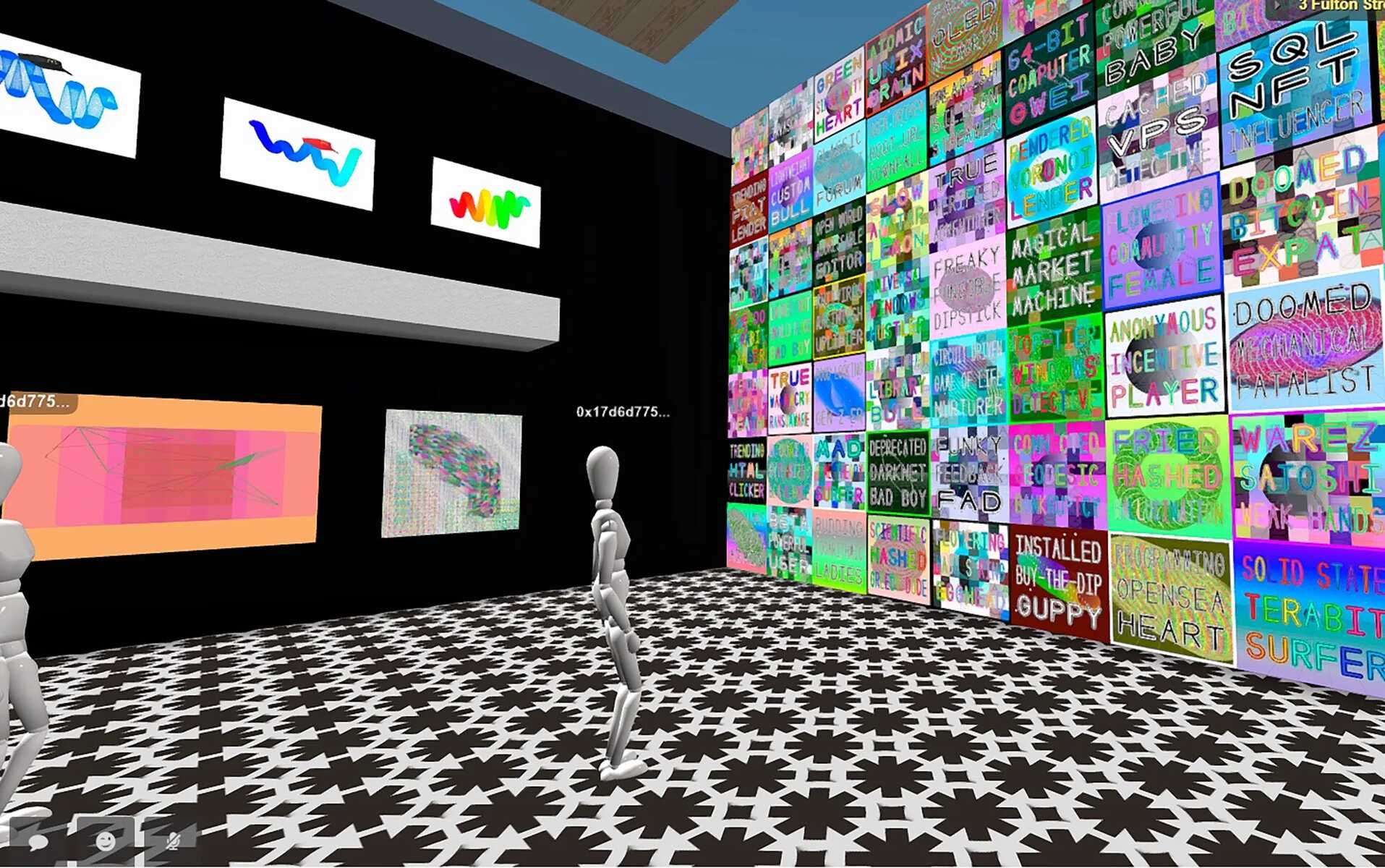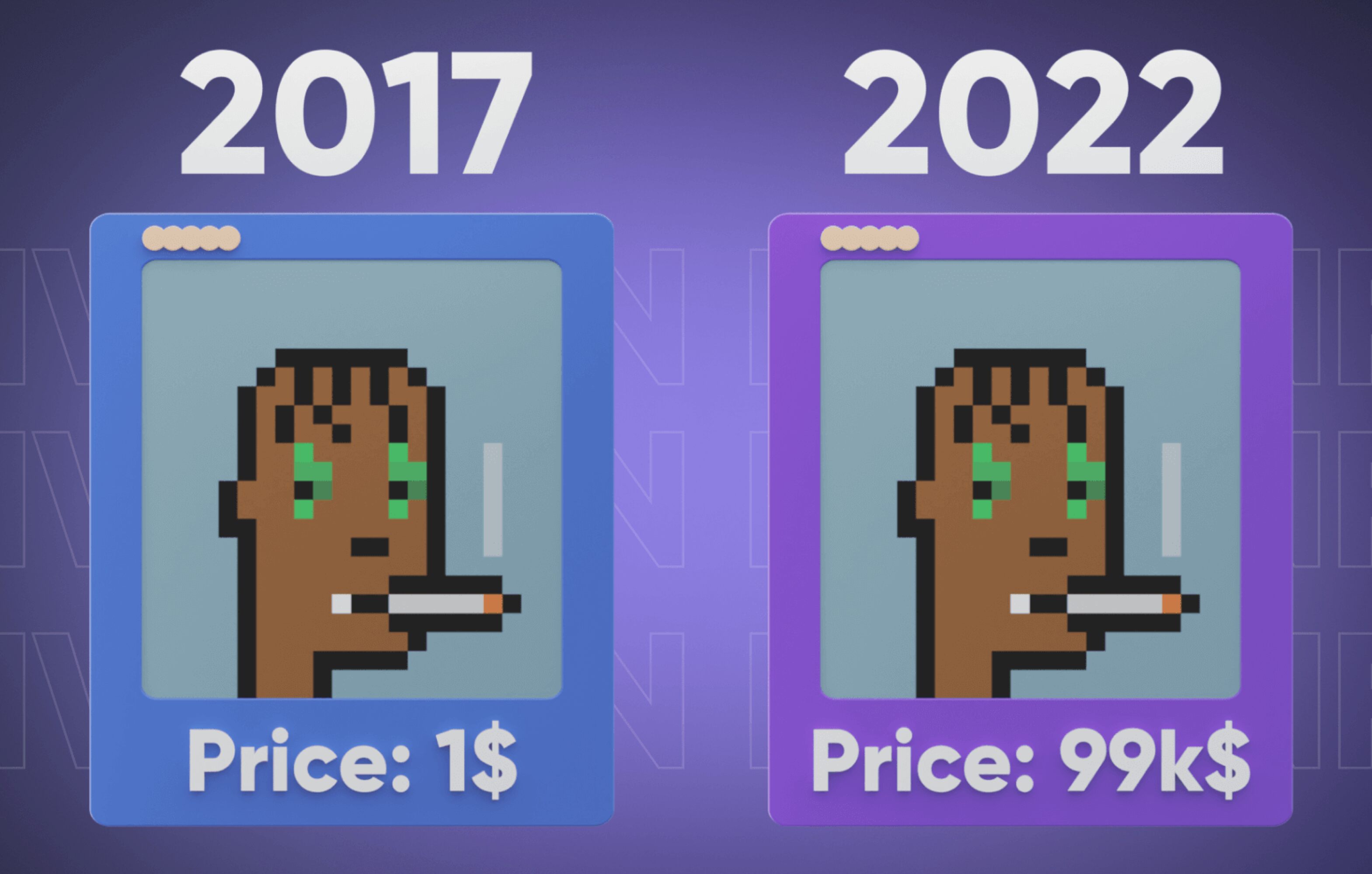Introduction
The world of art and collectibles has undergone a revolutionary transformation with the advent of Non-Fungible Tokens (NFTs), a digital form of ownership that has taken the market by storm. NFT sales have garnered significant attention in recent times, capturing the interest of artists, collectors, and investors alike. This emerging market has created new opportunities and challenges, revolutionizing the way we perceive and value digital assets.
NFTs are unique digital assets that exist on blockchain networks, providing proof of ownership and authenticity. Unlike cryptocurrencies such as Bitcoin or Ethereum, which are fungible and can be exchanged on a one-to-one basis, NFTs represent ownership of a specific item, making each one distinct and irreplaceable. This uniqueness has opened up a whole new world of possibilities, allowing creators and collectors to engage in a decentralized marketplace for digital art, virtual real estate, virtual goods, and more.
NFT sales work through a process known as minting, where creators tokenize their digital content by assigning it a unique identifier on the blockchain. This identifier verifies the authenticity, ownership, and transaction history of the asset. Buyers can then bid or purchase these NFTs using cryptocurrencies, typically Ethereum, through various online platforms marketplace.
The popularity of NFT sales can be attributed to several factors. Firstly, NFTs provide artists with a new way to monetize their work, allowing them to reach a global audience without intermediaries. This gives artists more control over their creations and the potential for higher profits. Additionally, collectors are drawn to the exclusivity and uniqueness of NFTs, enabling them to own digital assets that cannot be duplicated or easily reproduced like physical artwork. Finally, the blockchain technology behind NFTs ensures transparency, provenance, and immutability, addressing concerns of authenticity and ownership that have plagued the art market for centuries.
While NFT sales offer numerous advantages, they also come with some potential downsides. The environmental impact of blockchain networks, particularly Ethereum, has raised concerns about the carbon footprint associated with the creation and trading of NFTs. Additionally, the volatility and speculative nature of the NFT market pose risks for investors, as the value of NFTs can fluctuate wildly. Moreover, the ease of creating and selling NFTs has led to issues of copyright infringement and plagiarism, requiring careful attention to intellectual property rights.
What Are NFTs?
Non-Fungible Tokens (NFTs) are unique digital assets that are revolutionizing the world of art, collectibles, and digital ownership. Unlike cryptocurrencies such as Bitcoin or Ethereum, which are interchangeable and hold the same value, NFTs are indivisible and represent ownership of a specific item or piece of content.
NFTs are built upon blockchain technology, which is a decentralized digital ledger that records transactions and ensures transparency and security. Each NFT is assigned a unique identifier, also known as a token, which verifies its authenticity, provenance, and ownership history. This immutable record provides a level of trust and transparency that traditional markets have struggled to achieve.
One of the key features of NFTs is their ability to tokenize digital assets. This means that various forms of digital content, such as artwork, music, videos, collectibles, virtual real estate, and more, can be represented as NFTs. These assets can be traded, bought, and sold on different online platforms and marketplaces, creating a new ecosystem for digital ownership and commerce.
When an artist or creator mints an NFT, they determine the scarcity and uniqueness of the asset. For example, an artist may choose to create a limited edition series of NFTs, with only a specific number of tokens available. This limitation adds value and exclusivity to the NFTs, making them desirable to collectors and increasing their market price.
NFTs have gained significant popularity due to their potential to unlock new revenue streams for artists. By tokenizing their work, artists can bypass traditional intermediaries, such as galleries or auction houses, and sell directly to collectors. This allows artists to retain more control over their creations and earn royalties from subsequent sales through smart contracts, which automatically distribute a portion of the sale proceeds to the original creator.
Moreover, NFTs enable collectors to showcase their digital assets in virtual galleries, display cases, or even in virtual reality environments. These immersive experiences enhance the value and enjoyment of owning NFTs and create a new dimension of interaction between creators, collectors, and enthusiasts.
How Do NFT Sales Work?
NFT sales operate on blockchain technology and involve a series of steps that facilitate the creation, sale, and transfer of digital assets. Here’s a breakdown of how NFT sales work:
1. Minting: The process begins with the creation of an NFT, often referred to as “minting.” Artists or creators upload their digital content, such as artwork, music, or videos, to an NFT marketplace or platform. This content is then tokenized, assigned a unique identifier, and verified on the blockchain, establishing its authenticity and ownership.
2. Ownership Transfer: Once the NFT is created, it can be bought, sold, or traded on various NFT marketplaces. Interested buyers can participate in auctions or purchase NFTs directly from the creator or current owner. These transactions occur using cryptocurrencies, primarily Ethereum, which is the common standard for NFT transactions.
3. Smart Contracts: Smart contracts play a crucial role in NFT sales. They are self-executing agreements that facilitate the automatic transfer of ownership and the distribution of royalties. When an NFT is programmed with a smart contract, it specifies the terms of the sale, including commission fees for the NFT marketplace, royalties for the creator, and any other conditions set by the seller.
4. Licensing and Royalties: NFT sales allow creators to retain control over their work by implementing licensing terms and royalty mechanisms. Creators can determine the percentage of royalties they receive from secondary sales of their NFTs. Whenever an NFT is resold, a portion of the sale price is automatically sent back to the original creator or designated beneficiary as per the pre-determined terms.
5. Verification and Provenance: The blockchain serves as an immutable record of all NFT transactions, ensuring transparency and provenance. Each NFT includes information about its origin, previous owners, and any associated metadata, establishing a verifiable history of ownership and authenticity.
6. Storage and Display: After purchasing an NFT, owners can store their digital assets in digital wallets that are compatible with the blockchain network. These wallets provide secure storage for NFTs and allow for easy access and transfer. Some platforms also enable owners to display their NFTs in virtual galleries or showcase them in virtual reality environments.
It’s important to note that the process of NFT sales may vary slightly depending on the platform or marketplace used. However, the underlying principles of minting, ownership transfer, smart contracts, royalties, verification, and storage remain consistent across most NFT transactions.
Why Are NFT Sales Popular?
NFT sales have gained immense popularity in recent times, captivating both artists and collectors worldwide. Several factors contribute to the widespread adoption and appeal of NFTs:
1. Digital Ownership: NFTs provide a new and unique form of digital ownership. With NFTs, individuals can own and trade digital assets, giving them a sense of exclusivity and control over their digital possessions. This concept appeals to collectors who have a desire to own rare and valuable items in the digital world.
2. Scarcity and Uniqueness: NFTs allow creators to establish scarcity and uniqueness for their digital creations. Artists can control the number of tokens minted for their artworks or content, creating limited editions or even one-of-a-kind pieces. This rarity adds value to the NFTs and increases their appeal to collectors and investors.
3. Direct Monetization: NFT sales enable creators to directly monetize their work, bypassing traditional gatekeepers such as galleries or auction houses. Artists can showcase and sell their digital assets on NFT marketplaces, reaching a global audience and earning income from their creations. This empowers artists by giving them more control over the distribution and monetization of their art.
4. Blockchain Technology: NFTs are built upon blockchain technology, which ensures transparency, immutability, and provenance. Blockchain eliminates issues of counterfeit or stolen artwork by providing a permanent and verifiable record of ownership and transaction history. This level of trust and authenticity appeals to collectors and investors.
5. Tokenization of Various Assets: NFTs have expanded beyond artwork and have tokenized various digital assets, including music, videos, virtual real estate, gaming items, and more. This broad range of possibilities attracts a diverse range of enthusiasts and collectors, creating a vibrant and dynamic market.
6. Engagement and Interactivity: NFTs offer new ways for creators and collectors to engage with digital assets. Virtual galleries and platforms allow users to explore and showcase their NFT collections in immersive environments. This interactive and social aspect enhances the overall experience of owning and collecting NFTs.
7. Potential for Future Value: The speculative nature of NFTs and the potential for future value appreciation contribute to their popularity. Some collectors and investors see NFTs as digital assets that can appreciate in value over time, similar to traditional artwork or collectibles. This investment potential attracts individuals who are looking for new opportunities and alternative investment vehicles.
Overall, the popularity of NFT sales can be attributed to the unique combination of digital ownership, scarcity, direct monetization for artists, the transparency of blockchain technology, the tokenization of diverse assets, interactivity, and the potential for future value appreciation. It’s an exciting and transformative time for the art and collectibles market, as NFTs reshape the way we perceive, own, and trade digital assets.
Advantages and Disadvantages of NFT Sales
NFT sales have brought about significant changes in the art and digital collectibles market. While they offer numerous advantages, it’s important to consider the potential disadvantages as well. Here are some of the key advantages and disadvantages of NFT sales:
Advantages:
- Digital Ownership: NFTs provide a unique form of digital ownership, allowing individuals to own and trade digital assets. This opens up new opportunities for collectors and enthusiasts to engage with digital art and other forms of digital content.
- Creator Control: NFT sales enable artists to have more control over their creations and the ability to monetize their work directly. By selling NFTs, artists can bypass traditional intermediaries, such as galleries or auction houses, and reach a global audience, earning income and recognition.
- Transparency and Provenance: Blockchain technology ensures transparency and provenance in NFT transactions. The immutable nature of the blockchain verifies the authenticity and ownership of NFTs, addressing concerns related to counterfeiting and fraud in the art market.
- Royalties and Secondary Sales: NFTs can be programmed with smart contracts that automatically distribute royalties to creators whenever their NFTs are resold. This provides ongoing income for artists and incentivizes them to continue creating.
- Accessibility and Global Reach: NFT sales have made art and collectibles more accessible to a global audience. Anyone with an internet connection and a compatible digital wallet can participate in NFT sales, democratizing the art market and expanding opportunities for artists and collectors.
Disadvantages:
- Environmental Concerns: NFT sales, particularly on the Ethereum blockchain, have faced criticism for their significant energy consumption and impact on the environment. The carbon footprint associated with minting and trading NFTs has raised concerns about the sustainability of the market.
- High Volatility: The value of NFTs can be highly volatile, subject to sudden price swings and market trends. This volatility poses risks for investors who may experience substantial gains or losses depending on market fluctuations.
- Copyright and Plagiarism Issues: The ease of creating and selling NFTs has led to concerns regarding copyright infringement and plagiarism. There have been instances where unauthorized digital copies of artwork or content have been tokenized and sold as NFTs, requiring careful attention to intellectual property rights.
- Market Saturation: The rapid proliferation of NFT sales has led to market saturation and an abundance of digital content flooding the market. With thousands of new NFTs minted daily, it can be challenging for artists to stand out and for collectors to navigate the vast offering.
- Lack of Regulation: The NFT market is still relatively new and lacks comprehensive regulation. This can lead to potential risks for buyers and sellers, such as scams, fraudulent transactions, or disputes over ownership and authenticity.
As the NFT market continues to evolve, it’s crucial to consider and evaluate these advantages and disadvantages to make informed decisions when participating in NFT sales. Increased awareness, regulation, and sustainability efforts will be key in shaping the future of this exciting and transformative market.
How to Participate in NFT Sales
Participating in NFT sales allows individuals to explore the exciting world of digital ownership and collectibles. Here are a few steps to get started and participate in NFT sales:
1. Choose a Wallet: To begin, you’ll need a digital wallet that supports NFT transactions. Popular options include MetaMask, Trust Wallet, and Coinbase Wallet. Install and set up a wallet of your choice, following the instructions provided by the wallet provider.
2. Create an Account: After setting up your wallet, create an account on an NFT marketplace or platform. Some popular NFT marketplaces include OpenSea, Rarible, and SuperRare. Complete the registration process by providing the necessary details, such as your email address and username.
3. Secure your Wallet: It’s essential to prioritize the security of your wallet and keep your private keys safe. Enable two-factor authentication, use strong and unique passwords, and consider using a hardware wallet for added security.
4. Prepare Your Assets: If you’re an artist or creator, prepare your digital assets for minting as NFTs. Ensure that your artwork, music, or other digital content meets the requirements and guidelines of the NFT marketplace you’ve chosen. Prepare high-quality images or files, relevant metadata, and descriptions for your NFTs.
5. Mint Your NFT: Once your assets are ready, navigate to the minting section of the chosen NFT marketplace. Follow the provided instructions to upload your digital content, fill in the necessary details, and determine the price, edition, and other specifications of your NFTs. Pay attention to gas fees, which are transaction fees on the blockchain network, and ensure you have enough funds in your wallet to cover the fees.
6. List Your NFTs: After minting your NFTs, list them for sale on the marketplace. Set the desired price, choose between auction or fixed-price listings, and add relevant tags and categories to enhance the discoverability of your NFTs. Consider promoting your NFTs through social media channels, online communities, or networking within the NFT community to increase exposure.
7. Buy and Collect NFTs: If you’re interested in buying NFTs, browse through the marketplace and explore the vast collection of digital assets available. Use filters, search functions, and categories to narrow down your preferences. Read the details and descriptions of NFTs, evaluate the reputation of creators, and assess the historical sales and pricing trends to make informed purchasing decisions.
8. Complete the Transaction: When you find an NFT you’d like to purchase, click on it to view the detailed information. Ensure you understand the terms and conditions of the sale, including any royalties or licensing agreements. If you’re satisfied with the NFT, proceed to purchase it by following the instructions on the marketplace. Make sure you have enough funds in your wallet to cover the purchase price and any associated fees.
9. Store and Display Your NFTs: Once you’ve purchased or minted NFTs, store them securely in your wallet. Some wallets offer options to display and showcase your collection. Explore virtual galleries, display cases, or other virtual reality environments to exhibit and enjoy your digital assets.
Participating in NFT sales requires careful consideration, research, and understanding of the potential risks and rewards. Stay informed about the latest trends, emerging artists, and developments in the NFT market to make the most of your participation.
Top NFT Sales in History
The NFT market has witnessed some extraordinary sales, with digital assets fetching significant sums of money. Here are a few notable examples of top NFT sales in history:
1. Beeple’s “Everydays: The First 5000 Days”: In March 2021, the digital artist Beeple made history by selling an NFT artwork titled “Everydays: The First 5000 Days” for a staggering $69 million. This sale represented a major milestone in the NFT market and solidified Beeple’s position as one of the most prominent digital artists.
2. CryptoPunk #7804: In March 2021, a CryptoPunk NFT known as #7804 was sold for 4200 ETH, which was valued at approximately $7.6 million at the time. CryptoPunks are collectible, unique, algorithmically generated pixel art characters, and this sale demonstrated the high demand for these digital collectibles.
3. CryptoKitties: CryptoKitties, a blockchain-based game where players can collect, breed, and trade virtual cats, has seen several high-value sales. One of the most notable transactions was the sale of “Dragon,” a rare CryptoKitty, for 600 ETH, equivalent to around $170,000 at the time. This sale highlighted the growing popularity and value of rare and unique virtual collectibles.
4. Art Blocks Curated: The Art Blocks Curated platform has hosted various successful NFT sales. Notable examples include “Ringers,” a collection of generative art pieces, with one piece selling for 125 ETH (around $250,000) and “Squant,” a collection of algorithmically generated squiggles, with one sold for 97 ETH (approximately $200,000).
5. Hashmasks: The Hashmasks collection, a set of 16,384 unique digital artworks created by anonymous artists, has witnessed significant sales. One of the standout sales was the auction of a Hashmask named “Riot” for 420 ETH, equivalent to over $700,000 at the time. This sale demonstrated the strong demand for unique, digital art collectibles.
These examples represent just a fraction of the notable NFT sales that have taken place. The NFT market continues to evolve rapidly, with new records being set and new opportunities emerging for both artists and collectors.
It’s important to note that the NFT market can be volatile, and the value of NFTs can fluctuate. Sales prices can also be influenced by factors such as the reputation of the artist, scarcity of the asset, and market trends. As the market matures, it’ll be interesting to see how the landscape evolves and what future sales will shape the NFT market further.
The Future of NFT Sales
NFT sales have already had a profound impact on the art, collectibles, and digital ownership landscapes. As the market continues to grow and evolve, several trends and developments are shaping the future of NFT sales:
1. Mainstream Adoption: The NFT market is on the path to mainstream adoption. As more artists, creators, and collectors enter the space, and as established brands and institutions embrace NFTs, the market will expand and become more accessible to a wider audience.
2. Integration with Virtual Reality and Metaverse: NFT sales are likely to become increasingly integrated with virtual reality (VR) and the metaverse. Virtual galleries and immersive experiences will allow collectors to showcase and interact with their NFTs in virtual environments, enhancing the overall ownership experience.
3. Enhanced Interoperability: The ability to transfer and trade NFTs across different platforms and blockchain networks will become more seamless and efficient. Interoperability protocols, such as cross-chain bridges, will enable NFTs to move between different blockchain networks, increasing liquidity and expanding the possibilities for collectors.
4. Environmental Sustainability: Efforts to address the environmental impact of NFT sales will continue to gain momentum. The development and adoption of more environmentally friendly blockchain technologies or layer-2 solutions will aim to minimize the carbon footprint associated with NFT transactions.
5. Expansion into Real-World Assets: NFTs have the potential to extend beyond digital assets and enter the realm of real-world assets. Tokenization of physical assets, such as real estate, luxury goods, or intellectual property rights, may become more prevalent, creating new opportunities for fractional ownership and increased liquidity.
6. Regulation and Standards: As the NFT market matures, there will likely be an increase in regulatory oversight to protect buyers and sellers. Clearer guidelines, industry standards, and best practices will help foster trust and legitimacy, addressing concerns related to scams, copyright infringement, and intellectual property rights.
7. New Forms of NFTs: The development of new types of NFTs beyond artwork and collectibles is anticipated. NFTs may be utilized in areas such as virtual fashion, virtual land, digital identities, and gaming assets. This diversification of NFT categories will attract a broader range of participants and expand the possibilities within the market.
As the NFT market continues to evolve, it will be crucial for participants to stay informed, adapt to emerging technologies, and keep an eye on changing trends and regulations. The future of NFT sales holds immense potential for artists, collectors, and investors, as it continues to reshape the way we perceive and engage with digital ownership.
Conclusion
The world of Non-Fungible Token (NFT) sales has emerged as a transformative force in the art, collectibles, and digital ownership landscapes. NFTs have revolutionized the concept of digital ownership, enabling artists to monetize their work directly and collectors to own unique and irreplaceable digital assets. The popularity of NFT sales can be attributed to their ability to provide digital artists with new opportunities, offer collectors exclusive ownership, ensure transparency and provenance through blockchain technology, and create new avenues for engagement and interaction.
While there are significant advantages to NFT sales, such as direct artist monetization, transparency, and global accessibility, there are also considerations and challenges. Environmental concerns surrounding the energy consumption of blockchain networks, market volatility, copyright issues, market saturation, and the need for regulation are factors that need to be addressed as the NFT market continues to evolve.
Looking ahead, the future of NFT sales holds tremendous potential for mainstream adoption, integration with virtual reality, enhanced interoperability, sustainability efforts, expansion into real-world assets, regulation, and the development of new forms of NFTs. It will be essential for participants in the market to stay informed, adapt to emerging technologies and trends, and navigate the evolving landscape with caution and responsibility.
The NFT market is at a critical stage of development, and its impact on the art and collectibles market cannot be overstated. As artists, collectors, investors, and enthusiasts continue to explore and embrace NFT sales, it is clear that the landscape of digital ownership is forever changed. With its potential for innovation, global reach, and the creation of new revenue streams, NFT sales represent the future of digital art and collectibles, ushering in a new era of creativity, ownership, and possibilities.







